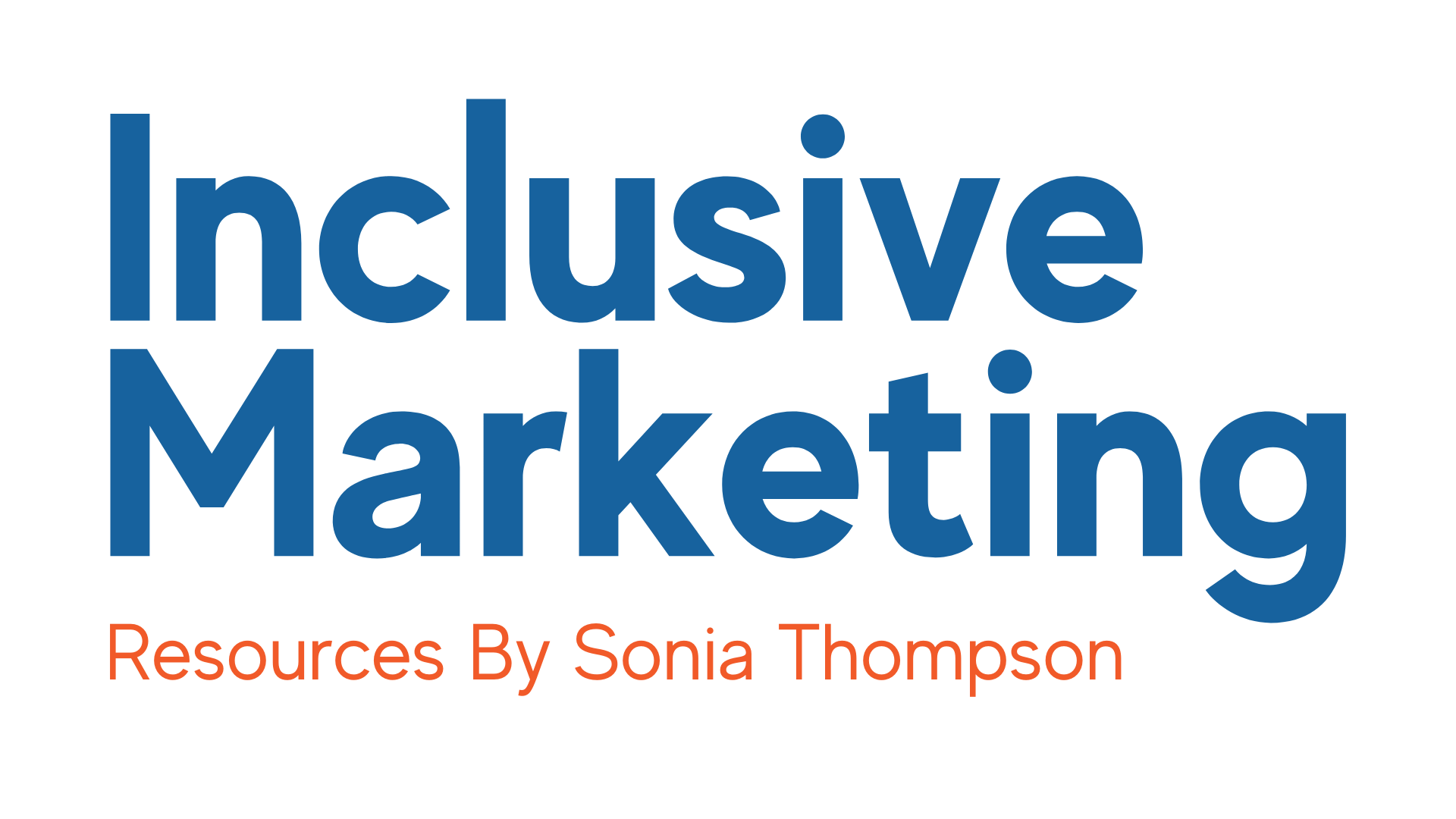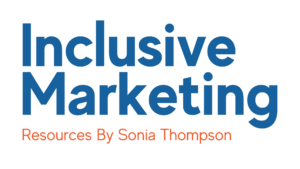Inclusive marketing is a term that’s popped up in recent years. However, the practice of it isn’t really new.
For instance, back in the 1970’s, brands like McDonald’s and Jell-O created promotions that targeted Black consumers. Campaigns that have targeted specific racial and ethnic groups have often been labeled multicultural marketing or even diversity marketing.
Brands have catered to global audiences for a long time as well. Many have done it by branching out into other markets as a means to grow. As I’ve walked through streets in cities in Europe, South America, and Africa, I’ve seen Starbucks, Subway, and ads for popular movies showing worldwide.
But in the past few years, the term inclusive marketing has started to latch on. As an inclusive marketing consultant, strategist, and founder of Thompson Media Group, I’m thrilled about that. A client I worked with a few years ago wasn’t even sure what to call the work we were doing. He just knew his team needed it.
One of the benefits of using the phrase inclusive marketing is that it is more encompassing. Consumers have identities that go beyond race, ethnicity, and nationality.
This is an important evolution. There are a number of ways in which the people you serve can be different. By acknowledging those differences, and incorporating them into your marketing, you’ll do a better job of serving your ideal customers. You’ll also make them feel like they belong with you in the process.

This guide covers a lot of ground with regard to inclusive marketing. I’ll focus specifically on how and why to use it to make a bigger impact and grow your brand. You’ll also find plenty of examples along the way.
What is inclusive marketing?
The practice of inclusive marketing is still in its infancy and evolving. Here’s the definition I crafted with my fellow pioneers in this space to give guidance to our clients.
Inclusive marketing is all about acknowledging the many ways consumers are different, choosing which of those differences, or identities your brand will serve, and then incorporating those identities throughout your entire marketing mix.
At its core, inclusive marketing is just good marketing.
Marketing inclusively happens naturally when you’re focused on serving all of your customers to the best of your ability.
Examples of inclusive marketing driving business results
There’s plenty of examples of brands operating with an inclusive lens , that has enabled them to earn more revenue.
Karen Graham is the Chief Marketing Officer of eVite, an online invitation brand that touches more than 100 million customers in the U.S. each year.
Karen told me that she and her team have learned which invitations they need to offer by taking the time to engage with their consumers. Her team also taps into data to see what occasions their customer base is searching and making invitations for. As a result, they are able to effectively serve a bigger and broader diversity of customers.
When 100+ year old brand Stanley decided to include women as part of their ideal customer group, things rapidly changed for them in terms of revenue. Previously, when focusing their marketing on male outdoor workers and adventurers, the brand earned annual revenue of about $75 million. Then they expanded their base to women and doubled down on selling tumblers rather than thermoses. Their revenue grew to $750 million, in just four short years as a result.
Athleisure brand Lululemon decided to be more inclusive with their sizing. In fall 2020, they made their apparel available in sizes 0-20. Their revenue grew 43.91% in 2021, 27.5% in 2022, and 23.01% in 2023.
Inclusive marketing is a win-win. More customers get their needs met, and brands earn more revenue. What’s not to love about that?
Inclusive marketing is the future of marketing
Eventually, we’ll get to a place where calling it inclusive marketing won’t even be necessary. We’ll just refer to the act of being inclusive in your marketing, as the standard way of doing business.
But we’re not quite there yet.
Inclusive marketing is the best practice. But since it still isn’t yet the norm, it still needs to be labeled.
As such, we need to give language to what we need marketers and business leaders to do. Consumers evolve, and with them good marketing must evolve.
Here’s why inclusive marketing is rapidly becoming the baseline.
Consumer expectations
Consumers don’t compartmentalize their experiences. And as more consumers start to experience brands being inclusive in their marketing, it will rapidly become their expectation.
It used to be that beauty brands offered a limited number of foundation colors in their offering. Then in 2017, Rihanna’s brand Fenty Beauty launched with 40 shades of foundation. That choice accommodated people with different complexions all over the world. Sales of Fenty Beauty soared, and having a range of foundation colors became the expectation. Now offering 40 shades of foundation is the standard for beauty brands.
In addition data shows that diversity and inclusion in marketing is increasingly growing more important. One Adobe study showed that 61% of people in the U.S. find diversity in advertising important.
Another study by the Association of National Advertiser’s (ANA) Alliance for Inclusive & Multicultural Marketing (AIMM) showed that 62% of consumers are motivated or strongly motivated to support brands that offer targeted multicultural and diverse focused products, services or experiences.
Representation matters. We know this. We also have data that proves it. The 2021 State of Representation in Marketing study showed that 74% of consumers say representation in marketing is important to them for the brands they engage with and buy from.
Changing demographics
We live in a diverse society. There are many dimensions of diversity. The identities people hold influence their needs and desires as consumers.
And as expectations change, consumers want the brands they buy from and engage with to acknowledge how they are different. They want brands to accommodate their identity-based needs.
Here are some demographic shifts that are having an impact on the ways in which brands deliver products, services, and experiences to support their evolving customer base. I also included corresponding examples of how brands are responding to those changes in their marketing.
Examples of demographic change brands are responding to
The share of the White population in the U.S. declined for the first time ever recorded in 2020. The population went from 63.7% in 2010, to 57.8%. As a result, we’re seeing more brands acknowledge and celebrate other races and their cultures in their marketing.
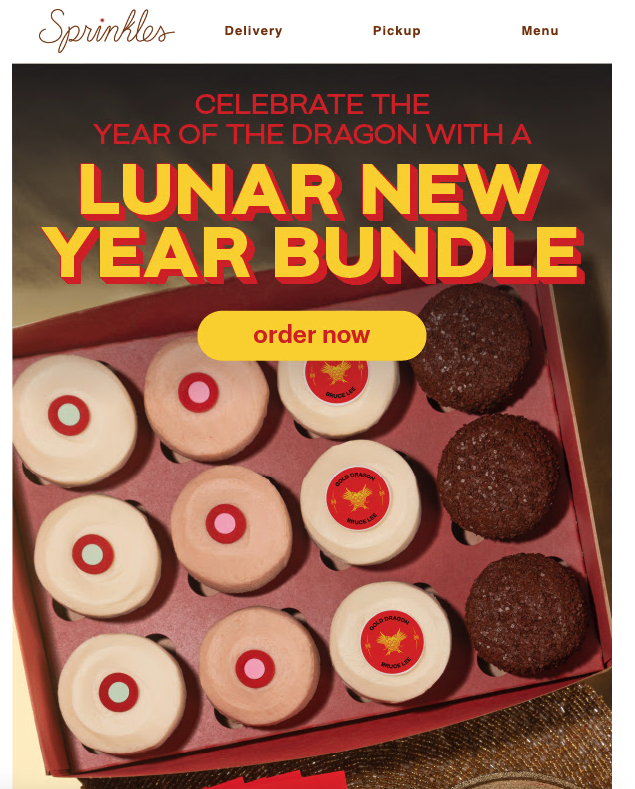
The U.S. has the second largest population of Spanish-speakers in the world. By the year 2050, 1 in 3 people in the U.S. will speak Spanish.
There’s already a significant number of Spanish speakers in the U.S. As such, more brands are making their website content available in Spanish.
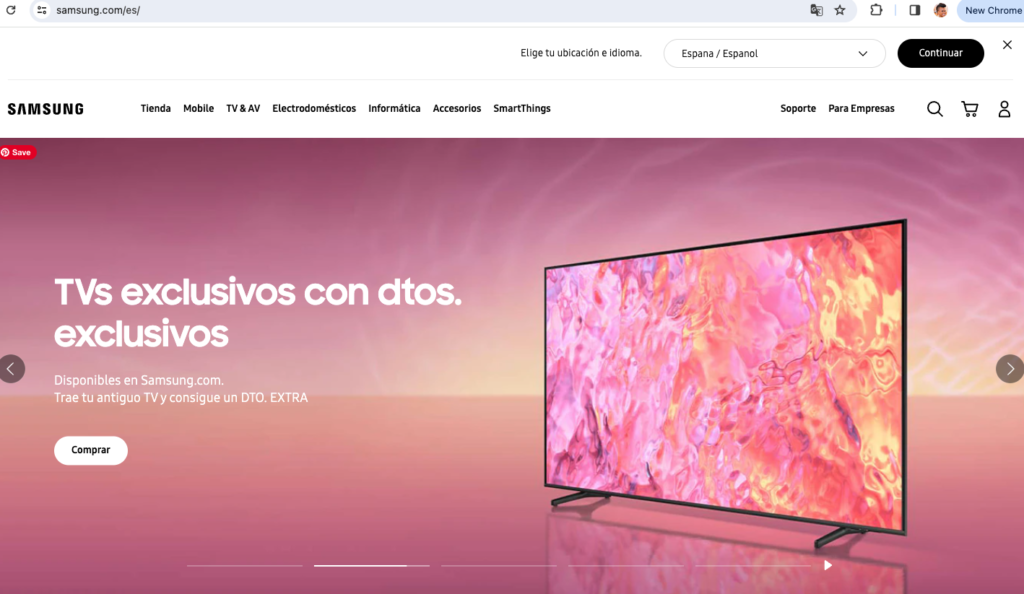
The average size of a woman in the U.S. and in the U.K. is between size 16 and 18. As a result more brands are offering a broader range of sizes, and showcasing plus-sized mannequins in their stores.

Less than half of kids under 18 in the U.S. live in what has long been thought of as the “traditional” family, with two heterosexual parents in the home.
Toymaker Hasbro acknowledged this shift by creating a “Create Your Potato Family” box set. It included a variety of different accessories enabling kids to build their own idea of what a family looks like.
Six out of 10 households in the U.S. have at least one person who restricts a food. Now we’re seeing more restaurants and food brands building menus that cater to dietary restrictions, including vegan, gluten-free, and sugar-free.
It is estimated than more than 30% of the population is neurodivergent. That’s why Walmart, the worlds largest retailer recently introduced “sensory friendly hours” across all their stores in the U.S. and Puerto Rico. Many people with sensory processing disorder are neurodivergent. Sensory overload in the stores made for a difficult shopping experience for them.
The WHO reports that 16% of the world’s population identify as having a severe disability. More brands are showcasing the stories of people living with disabilities in their campaigns. In recent years, Google has featured people with disabilities in leading roles in their Super Bowl commercials.
Gen Z, the group of people born between 1997 and 2012, are 21% of the U.S. population. They are also more than one quarter of the workforce.
At 48%, Gen Z is the most racially and ethnically diverse than any other generation before them. Now we’re seeing more brands like Coinbase feature this generation as the focal points of their ads, and speaking directly to challenges they face.
Government mandates
Historically, governments have largely stayed on the sidelines and have let brands decide who they choose to market to.
But increasingly, there have been more cases of government bodies getting involved. They want to ensure brands aren’t excluding certain marginalized communities in their marketing.
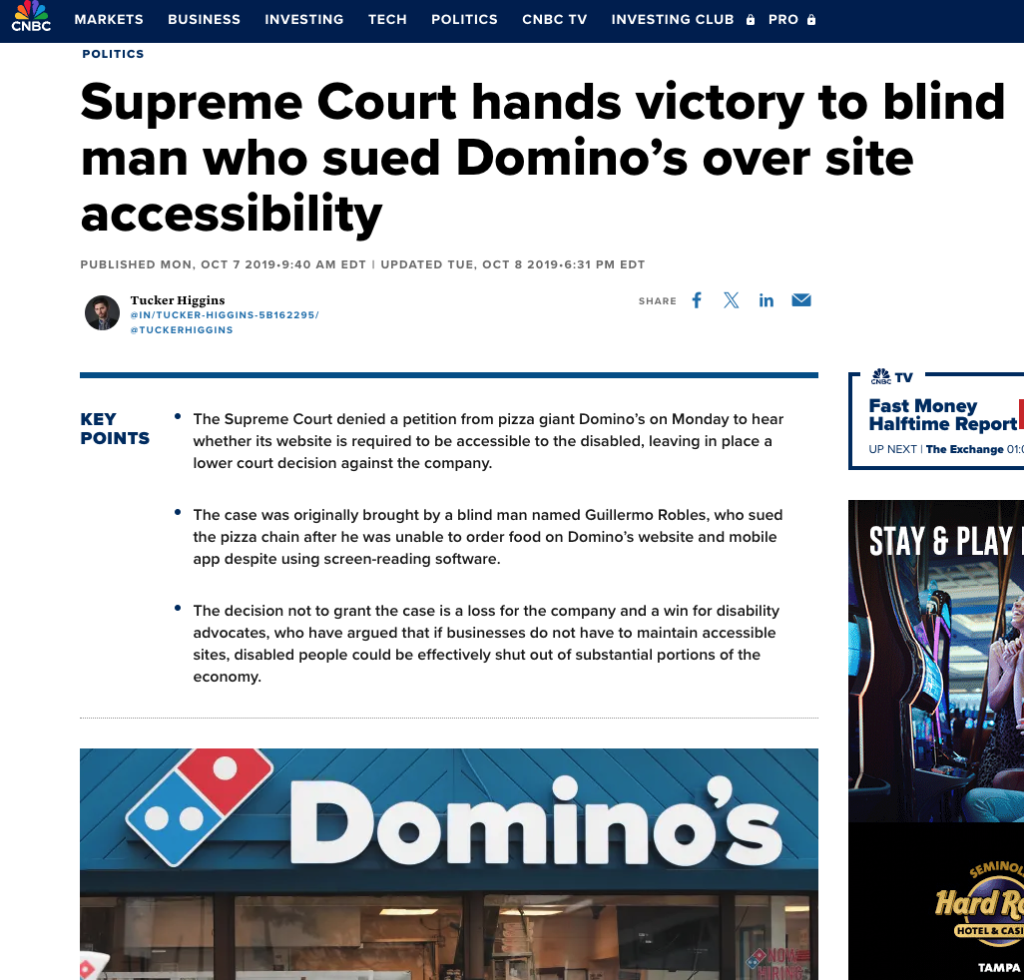
And in other cases, governing bodies are issuing guidelines that protect vulnerable communities, such as kids, from marketing that could cause harm.
Why so many brands struggle with inclusive marketing
I’ve talked to many marketers and consumers, and have studied many brands over the years in my work in inclusive marketing. I’ve found, in most instances, brands that aren’t inclusive in how they operate, isn’t a result of malicious intent.
In many cases, marketers haven’t done the work to effectively identify who has the problem their brand solves. When marketers have a limited view of what types of people make up their ideal customers, their marketing often excludes people they don’t intend.
The solution to this is to be intentional about identifying the ways in which the people you serve and want to serve are different. Then choose which identities you want to make feel like they belong with your brand.
What you need to deliver authentic and effective inclusive marketing
Every brand has the potential to be an inclusive brand. I also believe every brand can deliver authentic marketing that makes all the people you want to serve feel like they belong with you.
However, I’ve found that many brands that desire to be inclusive struggle to do it consistently. A big reason is because they are externally focused. So much of your success with inclusive marketing is based upon work you do internally in your organization.
Here are key ingredients I recommend to get the results you want with your inclusive marketing over the long-term.
Inclusive brand
An inclusive brand is one where inclusion is infused into the DNA of the way you operate. You need to be an inclusive brand to effectively do inclusive marketing over the long-term.
Inclusion-based thinking doesn’t just belong on promotional campaigns and in marketing assets. It needs to be a part of your strategic planning. It needs to show up in your staffing. Your team’s performance metrics need to reflect an inclusive mindset. Same goes for the suppliers you work with, and more.
Why is this the case?
Because increasingly, consumers from underrepresented and underserved communities are a little skeptical. They want to know that the brands now vying for their attention (after ignoring them for years), actually care about them. They’d rather not be bothered with brands that are just showing up now because they want diverse consumers to buy.
In the 2021 State of Representation in Marketing study I conducted, consumers stated over and over again that their expectation was that they wanted to see inclusion at all levels of a brand. They don’t want it to just appear in their marketing campaigns. Here’s a few responses:
“I wish brands can be more inclusive with every aspect of their businesses!”
“When you choose to represent different types of people, that inclusivity needs to translate into other areas of the brand. The brand also needs to be outspoken politically, have fair hiring tactics, etc, or people will realize that their “representation” is just pandering for sales.”
“I wish more brands understood that a diverse representation cannot be achieved by only one channel: showing a mixed race couple or gay male couple in a tv ad is not enough. The brand should also incorporate the diversity into their hiring, their brand principles, as well as their public image.”
“it’s more than just putting someone on an ad. they need to create products that cater to different people, hire people that are diverse”
“I wish they included more types of people in both their campaigns and in their actual companies as Senior Leaders”
Inclusive brands don’t just engage in inclusive marketing. They demonstrate that inclusion is core to what they do in all that they do.
Customer intimacy
Inclusive marketing requires a great degree of cultural intelligence. When you look at the brands that have publicly struggled with campaigns that aren’t inclusive, in almost every situation, it is due to a lack of customer intimacy.
When you’re engaging with communities that have traditionally been underrepresented and underserved, it’s essential to make them feel seen, supported, and like they belong with you.
You can’t do that if you don’t know and understand them. You have to understand their plight. It’s critical to know their dreams, desires, fears, and frustrations at more than a superficial level.
You develop a deeper degree of intimacy with the people you serve by spending time with them. By building relationships with them. By talking to and engaging with them.
Customer intimacy and adequate cultural intelligence don’t come from just reading a few market research reports that give insights about demographics, behaviors, and trends of a community group.
It comes from proximity, curiosity, and being present with them over time.
As a result, you’ll learn what issues are important to them. You’ll learn what to say. What not to say. How they say things. What frustrates them, what excites them, and so much more.
You and your team can use that knowledge to produce better work.
Lived experiences
Inclusive marketing isn’t about extraction.
It’s one thing to know something because you’ve read watched a video about it, talked to a friend about it, or even because you’ve observed it.
It’s an entirely different thing when you experience something for yourself.
Authentic marketing that ensures that people from historically underrepresented and underserved communities feel like they belong needs lived experiences to bring a story to life.
Here’s Academy Award winning director Denzel Washington explaining why lived experiences are so critical to the authenticity of a story.
And here’s Matthew Tsang, co-founder of inclusive marketing agency AndHumanity, sharing about how lived experiences impact marketing campaigns and bringing creative briefs to life.
Here’s the ad Matthew referenced.
Ideally, your marketing team will be representative of the identities of the customers you want to serve. If that isn’t the case today, you can still get the benefit of lived experiences by working with consultants, and co-creating with people who are part of the communities you want to reach.
Systems and processes
Marketing that is consistently inclusive will require you to develop internal systems and processes that enable you to deliver it over and over again.
That could mean documenting in your brand guidelines your standards for inclusive language. That might also look like creating standard operating procedures for ensuring your content is accessible. Another area to focus on could be revising your creative brief templates to ensure they encompasses specifics about the diverse audiences you are trying to reach.
Another area to pay attention to is your approval process. “How did this get approved?” This is commonly asked when a brand gets in trouble for a culturally insensitive campaign.
Smart brands are starting to think through how to do “cultural intelligence” or “inclusive marketing” checks as part of their overall review process.
I have a client that’s hired me to serve this function. We have it baked into the standard operating procedure that items that would need “inclusive marketing review” get sent to me at the same time they are sent for legal review.
Santronya Smith is the Director of Enterprise Sales at Suzy, a market research company. She told me about a client who’s marketing team would not accept a market research panel that didn’t meet certain representation guidelines.
These systems and processes aren’t just for the sake of being inclusive. They are in place to help you produce better work consistently.
Systems and processes will ensure your brand lives up to your inclusion standards when it comes to delivering products, communications, and experiences.
Having systems and processes for inclusive marketing will support your team in doing things right the first time, rather than having to go back and fix something after the fact before it becomes problematic.
And having systems and processes will enable you to build a culture of inclusion throughout your organization.
Note, your systems and processes don’t have to be and feel complex. One of my systems is to add captions to every video I produce for my brand, no matter which platform it lives on. As a result, my workflow now incorporates time, tools, and processes to ensure that happens.
Choosing
The definition for inclusive marketing clearly lays out an action brands need to take: choosing.
Many brands struggle to attract a diverse customer base, because they haven’t done the strategic work of choosing which customers they will serve from an identity standpoint.
As a result, most brands have buyer personas that do a poor job of highlighting the ways in which consumers are different, or the different identities they hold.
It is important to note that the people you want to serve do not check their identities at the door when it is time to make a buying decision. Their identities fuel their worldview, their experiences, and of course the way they make decisions.
Identity-based lived experiences also have an impact on whether or not those consumers will receive the messages you deliver to them.
Without choosing the identities you want to serve, it also becomes difficult to develop a deeper degree of customer intimacy.
Kit Kat Canada chose that their customer base included people who practice various religions, including the Muslim faith. Had they not chosen to serve people based upon that specific identity, they would’t have been able to produce this highly well received campaign designed specifically for this community.
Choose who are the specific types of people you want to make feel like they belong with your brand. What are their identities? What similarities do they have from a psychographic and behavioral profile? And also, what are the specific identities they have that could change the way they view and experience the products, communications, and experiences you deliver?
Choose. Everything else will flow from there.
Four Inclusive Brand Types
A common misconception about inclusive marketing is that it means you have to serve everyone. It doesn’t.
Some brands do a stellar job of serving everyone. However, that isn’t the expectation, or even feasible for many brands.
Just like there is no one right way to do marketing, there’s no one right way to do inclusive marketing.
To build an effective inclusive marketing strategy, I advise clients to choose what type of inclusive brand they want to be. I’ve developed a framework for four key inclusive brand types.
One brand’s path to being inclusive does not have to be your path.
Each brand has their own “personality” type. And if you’re goal is to build an inclusive brand that sustainably engages in inclusive marketing for the long-term, it is important to lean into the inclusive brand personality type that most reflects who you are as a brand.
It’s a cool exercise whenever you’re able to clearly identify what personality type brands are. It is also fun to observe the corresponding identities brands have chosen to serve when you look at their marketing.
Social Justice Warrior
A lot of times when brands get started down the path of figuring out how to be more inclusive, they get caught into a bit of a trap thinking that this means they need to comment on whatever social justice issue is live in the news.
There is a time and place for brands to speak up with regards to what is happening in the world. However, brands that are social justice warriors as a personality, are speaking out about issues that are important to them, both proactively, and reactively.
Why are they doing this? Because they’ve integrated key social issues into the way their business operates. As a result, it is just as common to see them talking about or educating on a social justice issue, as it is to see them talking about their product.
Patagonia and Ben & Jerry’s are both examples of brands that are social justice warriors. Both brands make that very clear on their websites in how they talk about why their brands exist.
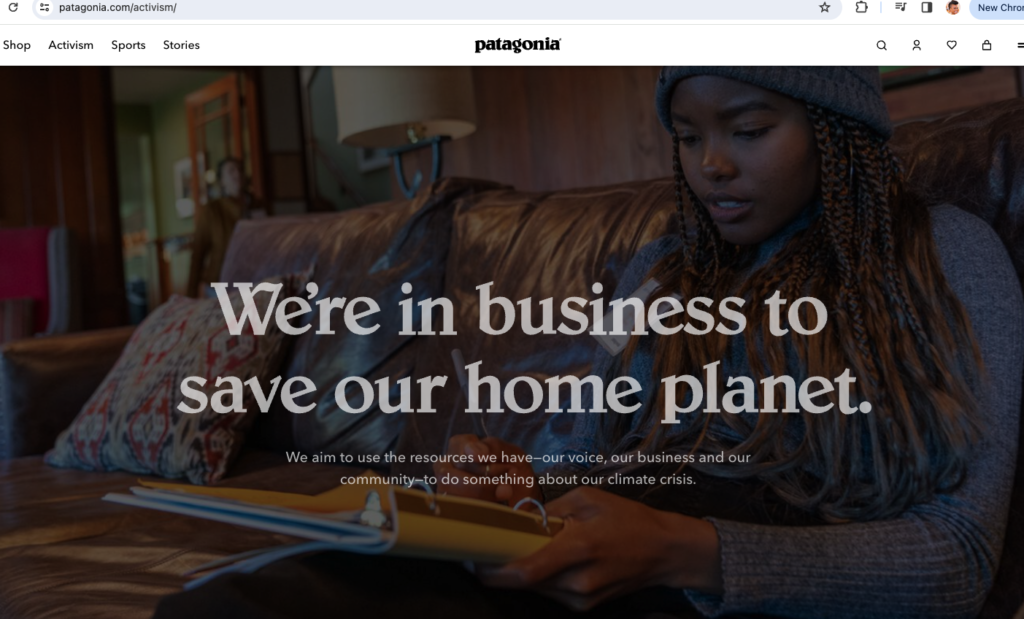
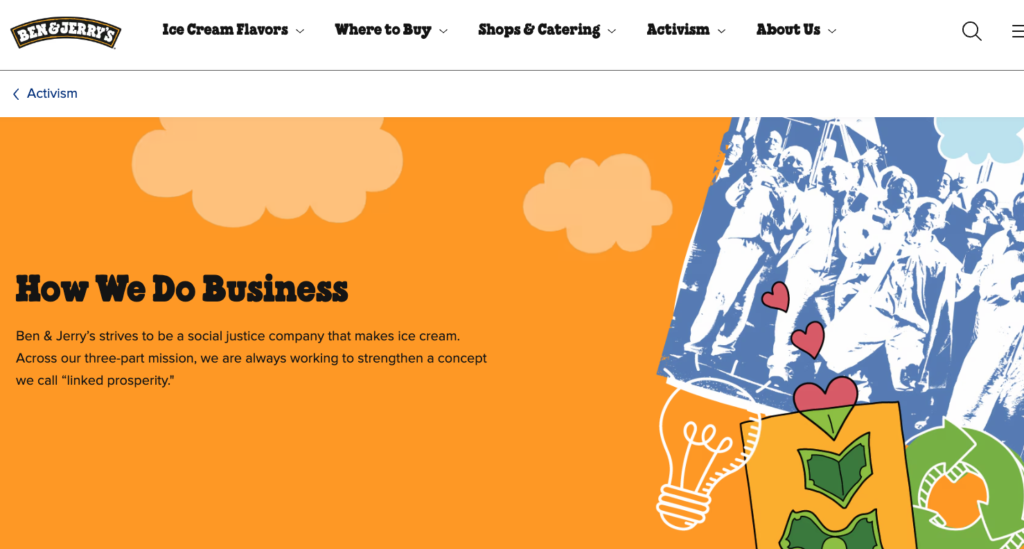
Oprah Car Giver
The Oprah Car Giver brand personality type gets it’s name from that iconic moment from the Oprah Winfrey show when she gave away cars to everyone in her studio audience.
Brands that fit into this personality type are those that do indeed intend to serve everyone. These brands don’t want to leave anyone behind. They don’t want anyone to not feel included when it comes to the products, services, and experiences they deliver.
Many of these brands have made their intention to include everyone in their marketing.
Google often talks about “building for everyone.” Their desire to serve all is baked right into their mission statement.
“Our mission is to organize the world’s information and make it universally acceptable and useful.”
Nike is another brand in this category. Nike’s mission statement is:
“To bring inspiration and innovation to every athlete* in the world. *If you have a body, you are an athlete.”
And Rihanna’s brands Savage X Fenty is another brand in this category. The brand reinforces the message that they are for everyBody in their promotions and events.
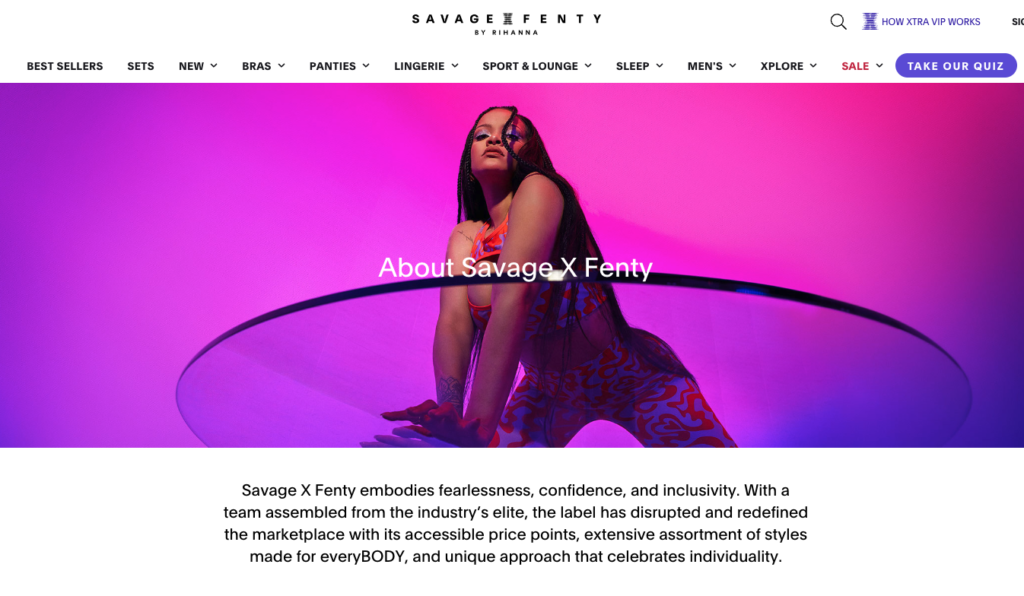
Pie Slicer
Many brands will fall into this category of inclusive brand personality types. The pie slicer is a brand that focuses on serving a piece of the total available pie of consumers, rather than the entire pie that the Oprah Car Givers serve.
The actual size of the pie depends on the brand. However, the essence of this category is the brand’s specific choice as to which customer groups it will serve.
Cooper’s Hawk is a restaurant chain that has chosen to cater to gluten-free people as a part of their customer base. On their website, they’ve made it easy to access the abundant gluten-free version of the menu. And in the actual restaurants, they bring gluten-free bread (that is delicious by the way) to the table for people like me who are gluten-free. It’s a rare treat, which is one reason we like to eat there.
VidIQ is another brand that’s chosen a specific piece of the pie of customers to cater to. They have an English-based educational YouTube channel. The brand has also chosen to invest in making a Spanish language YouTube channel as well to reach the Spanish-speaking slice of the YouTubers pie.
Spotlight Shiner
This brand type focuses their efforts toward marketing to people who have identities that have historically been underrepresented and underserved. They are shining a spotlight on a community that many brands have long ignored or haven’t done a sufficient job of serving them.
Haute Hijab is a brand that specializes in creating stylish hijabs for Muslim women to use as they go about their day-to-day activities. They’ve even included a selection of hijabs designed for playing sports.
Nubian Skin is a brand that makes nude lingerie and hosiery for women of color. Many women of color have trouble finding a shade of nude that matches their skin tone.
And Canyon Bakehouse is a brand that makes gluten-free bread, that importantly is also delicious. Their bread is also free of common allergens like soy, dairy, and nuts.
This fun quiz can help you identify which inclusive brand personality type you are.
Inclusive marketing strategy
You don’t need a separate inclusive marketing strategy in addition to your existing plan. Inclusive marketing is really just good marketing. So the idea, is to bake inclusion into what you’re already doing from a marketing standpoint.
To help you along with how to start infusing inclusion into your marketing, think about three core areas to focus your efforts.
Customer acquisition
Most brands spend a lot of time and resources thinking about how to acquire more customers. Thinking inclusively is a smart way to expand your customer base.
However, a lot of times brands don’t do a very good job of acquiring customers from underrepresented and underserved communities because their existing marketing does a poor job of making them feel like they belong.
Brands that have a diverse customer base are intentional about ensuring that they invite people from underrepresented and underserved communities to be their customer.
In this episode of the Inclusion & Marketing podcast I walk you through practical ways you can be intentional about inviting people from underrepresented and underserved communities to be your customers.
Customer retention
Lots of brands have historically done a poor job of retaining the customers they’ve worked so hard to acquire. And that behavior is often worse when you look at how well brands are able to retain customers from underrepresented and underserved communities.
Belonging, or lack thereof is often the culprit.
When the people you serve feel like they belong with you, they stick around. When they don’t, they go off in search of another brand that does make them feel that way.
Sometimes brands struggle to retain diverse customer groups because their marketing presented an inclusive customer experience where everyone thrives, but that wasn’t their experience once becoming a customer. No bueno.
Nobody likes a bait and switch.
If someone invites me to their party, as a gluten-free person, I kind of expect that they’ll have something there that I can safely eat. If I get there, and there isn’t anything gluten-free I can enjoy, or if the options are pretty sad and limited, I’m not going to want to stick around, let alone go back for the next dinner party.
Once you start inviting consumers from underrepresented and underserved communities to be your customer, it is critical that you’ve done the work to ensure the customer experience you deliver throughout every stage of your customer journey is one where they feel seen, supported, and like they belong with you.
If you don’t you’ll quickly find you have a retention problem.
Customer success
Improving the success rate people from underrepresented and underserved communities have with you and you will increase their retention rates.
Improve the number of people from underrepresented and underserved communities who have success with you, and you will increase your customer acquisition rates for those communities as well.
The challenge, is that too often, people from underrepresented and underserved communities achieve success at different rates. That really means, is that people from marginalized communities often have lower levels of success than people with non-marginalized identities.
I explain why that is on this episode of the Inclusion & Marketing podcast.
So what’s a brand to do?
Leave no customer behind.
Sure, you might not be able to change the systems that hold people back. But you can create an environment, structures, and programming within your brand and the customer experience you deliver that makes it so that all your customers achieve success, no matter their identity.
On this Inclusion & Marketing podcast episode, you’ll hear about how one brand was able to increase success for people of color.
The role of customer experience in inclusive marketing
Inclusive marketing and customer experience are inseparable twins. Customer experience is the vehicle with which consumers experience how inclusive you are.
It is important to note your intentions are not the marker of success when it comes to how consumers receive what you produce. It is how the products, communications and experiences you deliver makes people feel that is the marker for success.
That’s why it is always important to think through the customer experiences you’re delivering, especially when it comes to people from underrepresented and underserved communities.
Why is this the case?
I know from plenty of personal experience and from interactions with lots of consumers. People from underrepresented and underserved communities have often been ignored or insufficiently served by brands.
And when some brands take the time to serve people from these communities, they often deliver a substandard experience that makes them feel like an afterthought.
Here’s an example of a Spanish-speaking consumer I talked to while doing some user testing. This brand had taken the time to translate their website into Spanish. But they fumbled the customer experience by not making the link to get to the Spanish version of the site easy to find. The consumer in the video explains how that makes him feel.
Customer experience is critically important in your efforts to build an inclusive brand that enables you to grow a bigger, more diverse and fiercely loyal customer base.
The Inclusive Customer Experience Spectrum™
I’ve created a framework, the Inclusive Customer Experience Spectrum™, that shows the different categories of inclusive customer experiences your brand delivers.
Know that the experiences you deliver for your brand will fall into one of these categories on the spectrum, whether or not you choose where you want them to fall. Better for you to ensure the experiences you’re delivering are the ones that will ensure the people you want to serve feel like they belong with you, rather than sloppy seconds.
Exclusion marketing
We’re all aware of this type of marketing. It is marketing that focuses on the masses, without any type of consideration for the ways in which consumers are different.
Many brands engage in exclusion marketing even without making the specific choice to say “this isn’t for you” for certain consumers. But that message is often one received loud and clear when consumers from underrepresented and underserved communities struggle to get their needs met.
I want to note, that unless your brand is one that has chosen to serve everyone (Oprah Car Giver), then know that there will inherently be some customer groups that you will exclude. And that’s ok.
For instance, if you’re brand does not have the resources to include consumers who speak French, Portuguese, or Vietnamese, then you will be excluding those consumers.
The important distinction here is that you have to choose. You have to choose who your brand will specifically work to include. As such, you’ll also choose which customers you won’t focus your efforts on ensuring they feel like they belong with you.
Raise your hand if you’re different
With this category on the spectrum, brands have done the work of acknowledging that certain consumers have different needs, and even accommodating for those needs.
But the problem is that it forces consumers that need that support to have to raise their hand and acknowledge, often to strangers, that they have a point of difference that requires a deviation from the primary customer experience.
This is problematic for a few reasons.
First, different people have different relationships with what makes them different. Some people wear it as a badge of honor and have no problem letting other people know about it. They see it as part of their identity and what makes them unique.
Other people would prefer not to have this identity or point of difference. They’d prefer to forget about it, not think about it, and definitely not to have to call attention to it.
And other people are just fine with their point of difference, however they have no desire to have to call attention to themselves, or feel like they are being a burden to get their needs met.
I spoke at a conference a while back, and after my talk it was lunchtime. It was a buffet lunch, and because none of the food was labeled with regard to what was gluten-free and what wasn’t, I had to go and ask someone on staff what was safe for me to eat. I had to raise my hand to acknowledge I was different.
After a little while, someone came back with a plate the chef prepared for me with a little bit of everything that was gluten-free and safe for me to eat. There were even items on my plate that weren’t available on the buffet. I was delighted with the special attention, but that process took at least seven minutes of me standing around waiting.
When I finally sat down to eat, I chatted with the woman sitting next to me who I discovered was also gluten-free. She told me she didn’t “raise her hand” to ask anyone about which items were gluten-free and which weren’t. She just kind of “guessed” which foods would be safe for her, and which wouldn’t, because she didn’t want to go through the process of asking.
Whenever possible, work to deliver customer experiences that don’t require your customers to have to raise their hands to get their needs met.
You’ve got options
This category on the spectrum does exactly what it says. It’s when brands provide options to people who don’t fit cleanly into what is considered to be “the masses,” “the mainstream,” or “the norm.”
We see examples of this often at restaurants, when they provide vegan options on the menu, however the entire menu isn’t vegan.
This category is distinct from “raise your hand if you’re different” because customers can self-select what they need based upon the options that are available to them, without having to specifically go and tell someone they need something different than what is provided.
You’re “normal”
This category on the spectrum is all about making sure no one you’ve chosen to serve feels “othered” as they go through your customer experience. A range of options are provided, and no one option is elevated above another.
That’s why in 2021 Unilever removed the word “normal” from all their packaging and any promotional campaigns and communications for their personal products and beauty brands. After doing extensive research, they found that if people had to buy a product that wasn’t “normal” it negatively impacted how they felt about themselves.
When you buy or configure a new smartphone, you’ll see that there are a number of options available for you in terms of language. You simply select your preferred language to operate your phone in, and then everything operates with your language settings in mind.
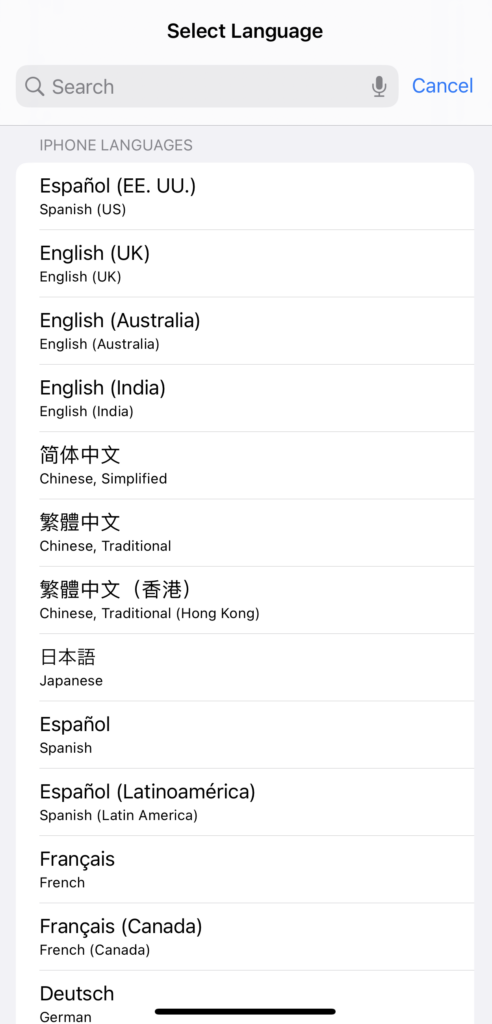
Exclusively for you
Brands activate this category on the spectrum whenever they want to serve a customer group that has unique needs where a specific product, communication, or experience needs to be designed with them in mind.
Left-handed scissors are designed specifically for people who use or want to use their left hand to cut.
Chuck E Cheese offers Sensory Sensitive Sundays where they open two hours early on the first Sunday of each month. The brand notes they offer this time “to support families of children with autism and other special needs.” During this time period, participating locations offer dimmed lighting, a quieter environment, and trained staff to support the families and children attending.
There are women only and men only universities.
The Mari Jean Hotel is a gay and adult only hotel.
While at times consumers like to be seen and to belong with everyone else, there are times when people who are part of marginalized communities want and need to be in environments with others who share their same identity and lived experience.
It provides a sense of safety. It provides understanding due to shared experiences. And it also provides a sense of belonging of people who you know get you.
The role of belonging in inclusive marketing
Life is about belonging. And because of that business is about belonging.
When the people you serve feel like they belong with you, they will reward you with their attention, their adoration, and their loyalty. And as said before, when people don’t feel like they belong with you, they aren’t going to stick around. They will not go all Meredith Grey on you.
The will go off in search of another brand that does make them feel that way.
For a lot of people the term belonging feels elusive, and they struggle to capture what it really is. My favorite definition comes from Chris Brogan in his book, The Freaks Shall Inherit the Earth.
Chris writes, “‘Fitting in’ often means shaving off your unique edges, hiding and masking what defines you, discarding any behaviors or appearances or images that prompt others to question you or push away from you. ‘Belonging’ is about finding that place where you finally let out a deep breath you had no idea you were holding and feeling with great certainty that the people around you understand you.””
I talk about belonging so much as it relates to your marketing because this is really the goal you are striving for. You want the people you want to serve, no matter what identities they hold, to feel like they belong with you. Not just in your promotional campaigns and when they first become a customer. But throughout the entire arc of their customer journey with you.
In this episode of the Inclusion & Marketing podcast, you’ll here first hand from consumers on what brands did to make them feel like they belonged.
And in this episode, you’ll learn specific actions you can take to make more people feel like they belong with you.
The ethics of inclusive marketing
Honestly, not enough people talk about inclusive marketing ethics. That’s a shame, because there are a lot of important considerations that need to be thought through before engaging with people from historically underrepresented, underserved, and marginalized communities.
Why is this the case?
Because many people within these communities are already vulnerable. That vulnerability is often the result of systemic and societal barriers that have been in place for far too long, that negatively impact people within the community making it harder for them to achieve success than people who don’t hold the same identities.
As a result, the overarching principle when it comes to engaging people from underrepresented and underserved communities is to ensure you are not causing harm.
I can’t say this enough: your intention is never the marker of success or if harm will be caused. The impact it has on the people on the receiving end of your actions is what determines if harm is a part of the equation.
So the question then becomes, how do you ensure you don’t cause harm to the people you want to serve?
Customer intimacy and lived experiences are great sources to guide you here.
The deeper the relationship you have with the communities you want to serve, the easier it will be to identify the impact, intended or not, your marketing will have on them.
And if you don’t have a good degree of cultural intelligence or sufficient amount of people with lived experiences on your team now, hire help that does. There are plenty of consultants who can help you with this to prevent causing further harm to any community, vulnerable or not.
I recorded this podcast episode that covers this topic more in depth.
Designing inclusive marketing campaigns
When I talk to clients about making their marketing more inclusive, often enough they get worried about the thought of having to make separate campaigns for every identity they’ve chosen to serve.
That’s not the case at all.
While there may be times where you’ll do specific promotions and campaigns that speak to one identity, that doesn’t have to be the norm. There are ways to produce communications and campaigns that do the job of making specific communities feel seen, while also doing the heavy lifting of communicating to broader audiences at the same time.
For instance, I love this Amazon Alexa commercial that appeared during the Super Bowl some years back. While it has mass appeal, the inclusion of a dark-skinned Black woman with natural hair as the lead spoke to me directly. I felt so seen, because it is unfortunately rare to see dark-skinned Black women with kinky hair in campaigns.
In this ad, Amazon Alexa made the “niche” or “diverse” consumer the lead consumer.
Michael Smith, is the Chief Marketing Officer at NPR. In his previous role as Senior Vice President and general manager at Scripps Network he explained how brands can send signals to specific communities that they are seen and that they belong, even in content that is designed to reach the masses.
“According to research we have seen over the years, if you make something with an all-White cast, a White audience won’t notice it. But a minority audience will notice it…And if you make something that has a significant presence of minority characters or a minority host, White audiences don’t notice that either. White Americans are just not as conscious of the ethnicity. But the audience members of color will really feel good about it.”
When you have customer intimacy and a deep degree of cultural intelligence on your team, you can create communications and campaigns in a way that enables you to make a broader number of people feel seen and like they belong with you.
How to get started with inclusive marketing
There are many onramps brands take to getting started with inclusive marketing. And to be effective with your efforts, there are a number of things to consider and decisions to take. However, I advise every client I work with the same way. Begin by defining the identities of the customers you want to serve.
Once you choose who you absolutely want to ensure feels like they belong with your brand, everything else will flow from there. Who you serve will inform what data you track. It will guide you on who to build relationships with. It’ will show you what cultural intelligence you need to gain. It’ll become clear who you need to develop a deeper degree of intimacy with. And it will even highlight which types of lived experiences you need to have on your team.
Choosing is a great starting point for getting your inclusive marketing train moving. I also recommend using my 5C Framework to Building an Inclusive Brand to focus your efforts on how to be most effective.
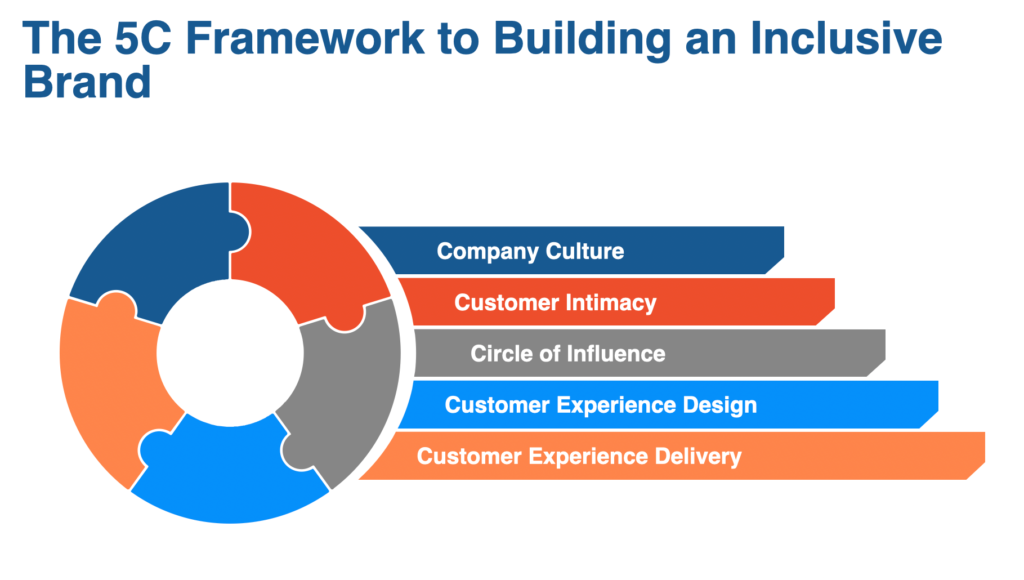
How to stick with inclusive marketing
A lot of brands started down the path of making their marketing more inclusive back in 2020 after the murder of George Floyd. Unfortunately since then, many brands have quietly walked away from their commitments. They’ve gone back to doing business as usual.
And after Bud Light’s debacle with how they handled the backlash to their partnership with transgender influencer Dylan Mulvaney, more brands have paused their efforts for fear of getting “cancelled.”
For your inclusive marketing efforts to pay off, consumers need to know that you’re in it for the long haul. They want to know you’re not on board just when it’s popular. They don’t want to see your brand only when there isn’t any opposition, or when your sales numbers are up. Here’s how to ensure you stick with it.
Values
Inclusion needs to be a part of your brand values. Some version of diversity, inclusion, and belonging needs to be incorporated.
That’s because brand values aren’t changed every year with the business plan. Brand values don’t have to constantly justify their merit.
Brand values are the way in which you’ve decided to show up as a business, and when done right, is infused into every part of your DNA.
Incorporating inclusion into your values ensures that it is infused into the way everyone on your team operates and makes it more natural for you to have an inclusive mindset.
Pinterest is an inclusive brand whose mission is to “bring everyone the inspiration to create a life they love.” On their website, they highlight their core values, two of which support their efforts to being inclusive. The value of “Put Pinners First” is described this way:
“We are relentlessly focused on Pinners’ diverse needs so that all our product, business and policy decisions are centered on their wellbeing. We actively invite Pinners to the conversation, so that we’re creating with them, not just for them.”
And their value of “Create belonging” is explained like this:
“We each take responsibility for creating a culture of belonging, we value individual perspectives and life experiences. Divergent thinking, honest debate, and real-time feedback are understood as the fuel for innovation and growth. By extending ourselves to others we build strong connections and support the well-being of our people.”
If you want to build an inclusive brand that makes the people you want to serve feel like they belong with you, do this. Make it a part of your values. And then of course, live your values.
Tie it to business results
I’ve seen it time and time again in my work as a consultant and creator in this space. Brands lose commitment to inclusive marketing when they haven’t tied it to business results.
To be clear: the moral imperative of inclusive marketing is strong. A lot of good is done when brands are inclusive.
But doing good gives way to business results in for-profit businesses that are focused on driving business results.
Too many marketers have gone down the path of making their marketing more inclusive without tying to business results. And as a result, when it became difficult to hit their numbers, anything not driving the business got put on the chopping block.
Inclusive marketing is good marketing, because inclusive marketing drives business results. All the brands I’ve mentioned in this guide are doing good with their inclusive marketing. And at the same time, their business results are improving.
I hate the thought that we have to provide such justification for including more consumers. However, we have to speak the language of decision-makers, which means speaking to their priorities.
Business leaders speak the language of results. And I can’t say this enough, inclusive marketing drives business results. Make sure you include that and the corresponding data to support it whenever you’re talking about inclusive marketing internally.
And also, make sure you highlight the impact you’re having on consumers’ lives as a result. That combo will infuse inclusion deeper into your brand and the way you operate.
How to measure success in inclusive marketing
I want to preface this section by saying, measuring success with inclusive marketing shouldn’t be a question of, “Hey this isn’t working. We’re not going to do it anymore.”
It should always be, “hey, we’re not seeing the results we like. So let’s figure out how we can be better.”
Overall, you measure success of your efforts with inclusive marketing by looking data associated with the people you want to serve. Here are some metrics to help guide you:
- How diverse is my brand’s customer base? When doing inclusive marketing effectively, you should see a more diversified customer base over time
- Am I retaining customers at the same rate? There shouldn’t be specific identities that consistently leave your brand at higher rates or more quickly than others. Effective inclusive marketing will help with that.
- Do all my brand’s customers achieve success at the same rate? Your customers should achieve success at equal rates. No one identity should outperform or underperform others on specific success metrics. Effective inclusive marketing will help with that.
Adopting these metrics means it is important to design a data collection plan that enables you to get a baseline of where you are today. And then of course, a plan that enables you to track your progress over time.
A few years ago I worked with a client that hired me to create an engagement strategy for African-Americans. Based upon their own measures, the brand should have been doing well with this community. But their data showed otherwise.
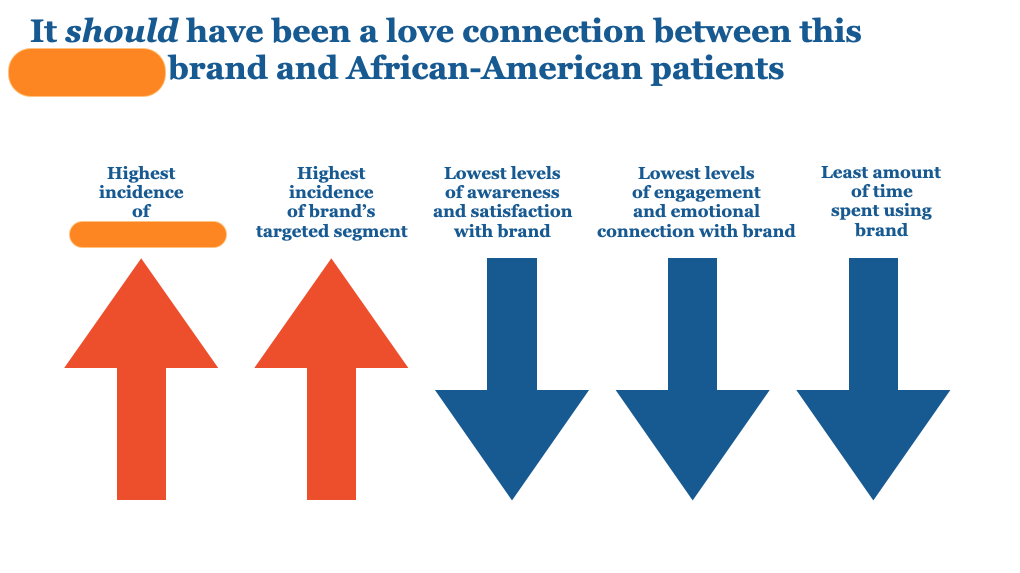
When you capture the right data, you can do a better job of measuring how you’re performing. And then put action plans in place to improve.
Parts of the marketing mix inclusive marketing touches
It touches everything. That’s because it’s just good marketing. So within your brand teams, there shouldn’t be one person responsible for inclusive marketing. It is everyone’s job, because it should be infused into all of these areas.
On the Inclusion & Marketing podcast I’ve done a number of episodes covering just about all of these areas. For those not yet covered, they are coming!. Tune in to the episodes specific to your area of focus. And pass them along to team members so they can dive deeper into these topics as well.
Influencer marketing
Search engine optimization
Content marketing
Copywriting
Messaging strategy
Performance marketing
Email marketing
Conversion optimization
Social media marketing
Event marketing
Public relations
Market research
User testing
Product design & development
It’s time for you to build an inclusive brand
Inclusive marketing is the future of marketing. There’s no point in fighting the future. And it isn’t smart to wait until you are forced to engage in inclusive marketing because it is what the market demands.
Also, don’t let fear get in your way. I’ve talked to a lot of marketers and business owners who are balls of fear about inclusive marketing. Most of them are so afraid of making mistakes and getting “canceled.”
I want to let you in on a little secret: mistakes are part of the process.
It’s how we learn and grow.
But mistakes, and disastrous mistakes you may be nervous about are less likely to happen when you follow the advice I’ve laid out here.
When you engage in inclusive marketing consistently, you will grow your business. I have no doubt in my mind about that. And you will make a bigger impact as your brand serves more people. I mean, it’s a win-win scenario, what’s not to love about that.
Take that next step forward in building an inclusive brand. And if you need help along the way, reach out at sonia @ soniaethompon dot com. I’d love to support you on your journey.
